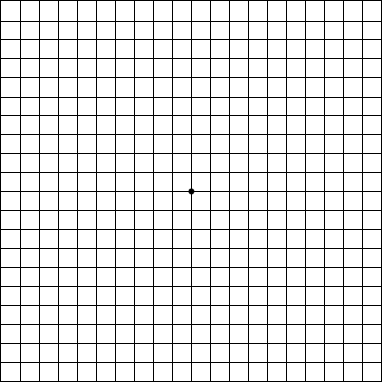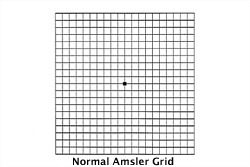

Patients on other medications that might produce retinal toxicity including digoxin were also excluded (n = 1). Patients with other disorders that might produce a maculopathy including diabetes mellitus, a history of ocular trauma, or other ocular disorders were excluded retrospectively (n = 7). The inclusion criteria were consecutive patients seen from 18 June 2002 to 25 July 2002 in the LA County-USC rheumatology outpatient clinic with a known history of connective tissue disorder and a best corrected visual acuity of at least 20/50. All 77 individuals who were approached agreed to participate in this study. Upon receiving institutional review board (IRB) approval for our study, we recruited patients from the rheumatology outpatient clinic at LA County USC in Los Angeles and obtained informed consent from them before study enrolment. In contradistinction, threshold Amsler grid (TAG) varies perceived luminance by implementing the use of cross polarising filters, thereby decreasing the image contrast and serving as a more sensitive test to detect relative scotomas and depressions in patients with maculopathy.

However, AG provides a suprathreshold target to examine the central visual field and relative scotomas may go undetected before they become absolute scotomas. Amsler grid (AG) testing has been a standard means of assessing the central visual field since its introduction in 1947 and a valuable screening method in order to prevent the sometimes irreversible manifestations of ocular toxicity. Currently, HCQ, which is far less toxic than chloroquine, continues to be used as an antimalarial drug and in the treatment of connective tissue diseases worldwide. The 4-aminoquinolone compounds, chloroquine and hydroxychloroquine sulfate (HCQ), have long been used to treat connective tissue disorders, most specifically rheumatoid arthritis (RA) and systemic lupus erythematosus (SLE). Additionally, the average area of each scotoma detected by all three methods expanded from 34.5 square degrees of central field loss on AG testing to 71 square degrees on RAG and 117 on TAG.Ĭonclusion: By decreasing the perceived luminance of the suprathreshold AG, TAG testing provides a novel alternative to detect shallow scotomas and areas of depressed retinal activity secondary to HCQ toxicity. Among patients who had been treated with HCQ, AG revealed scotomas in two of 56 (3.64%) patients in contrast, six (10.7%) and 37 (66.1%) scotomas were identified by RAG and TAG testing respectively. Results: No scotomas were observed in patients never treated with HCQ. Methods: 56 rheumatological patients taking HCQ and 12 similar patients not taking HCQ were tested by AG, red Amsler grid (RAG), and TAG. The aim of this study was to determine if the threshold Amsler grid (TAG) test, which varies light transmission through two cross polarising filters, allows increased detection of scotomas caused by HCQ toxicity. However, AG is a suprathreshold target and may not detect relative central scotomas. Currently, the standard Amsler grid (AG) is one of the most useful methods to identify such lesions. Background/aims: Patients taking hydroxychloroquine (HCQ) are at risk of developing classic bull’s eye maculopathy.


 0 kommentar(er)
0 kommentar(er)
